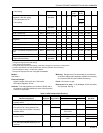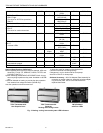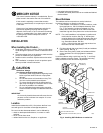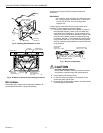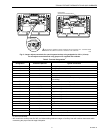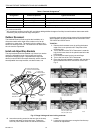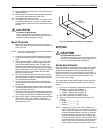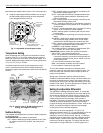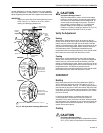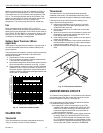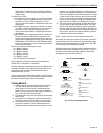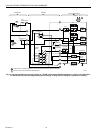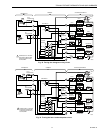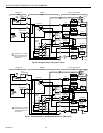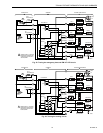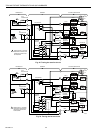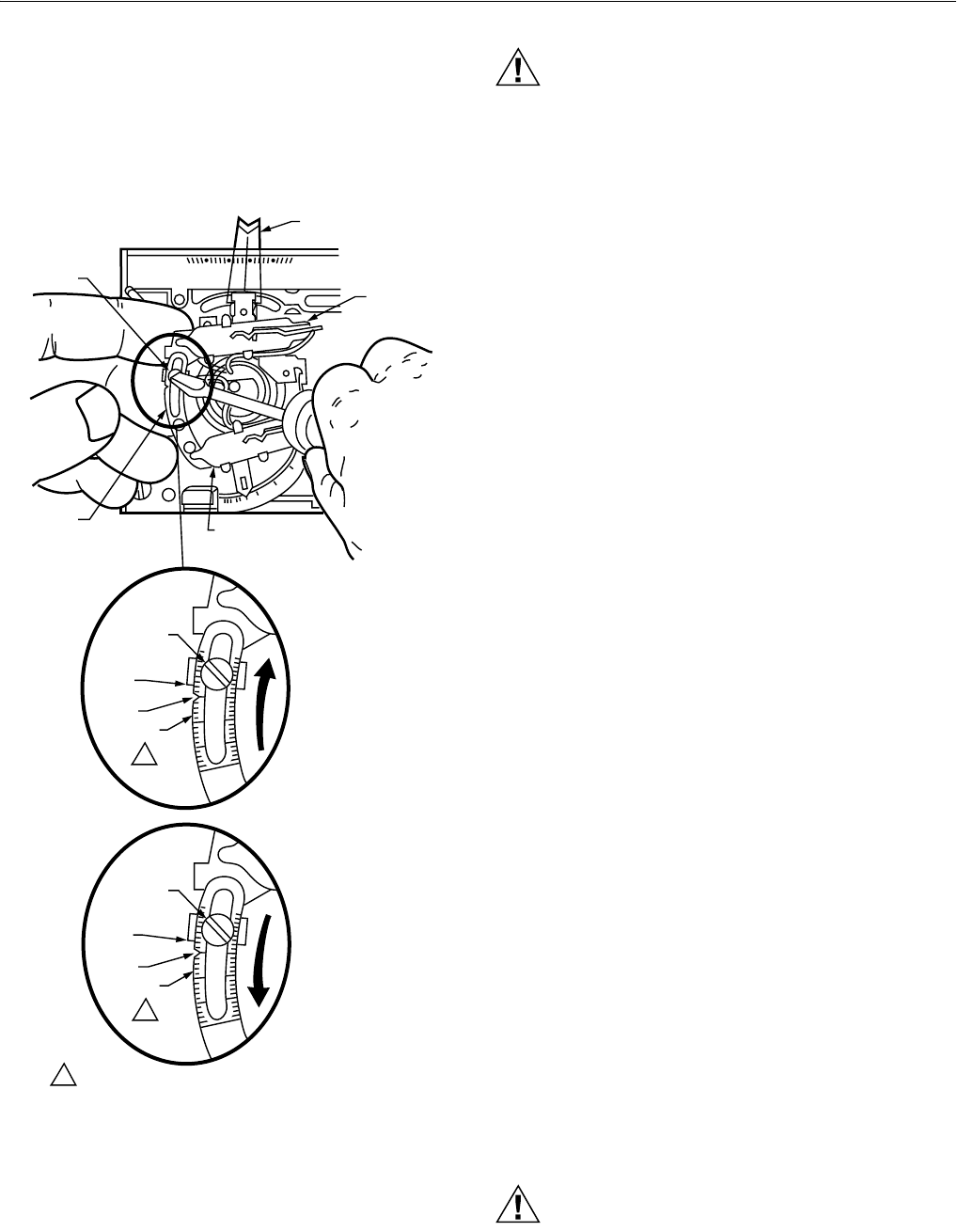
T874 MULTISTAGE THERMOSTATS AND Q674 SUBBASES
13 60-2485—8
smaller differential. In cooling, slide the lever closer together
for a larger differential, or wider apart for a smaller differential.
While supporting the scale with hand, tighten the tension screw.
IMPORTANT
Support the scale with hand while tightening tension
screw. See Fig. 13. Failure to do so can result in
twisting and damaging bimetal coil.
Fig. 13. Set adjustable interstage differential.
CAUTION
Equipment Damage Hazard.
When the thermostat is used to control a two-stage
heating or cooling system, the second stage mercury
bulb must never make before the first stage bulb, or
severe equipment damage could result. To prevent
this problem, provide at least 2°F (1°C) differential
between stage-one and stage-two make points.
Example: in heating, if stage-one makes at 70°F (21°C)
stage-two should make at 68°F (20°C) or lower.
Verify the Adjustment
Heating
Start with the heating setpoint lever all the way to the left.
Slowly move the lever to the right, just until the first stage bulb
makes (mercury rolls to the right side of the bulb). Note the
setting on the temperature scale. Slowly move the lever to the
right until the second stage bulb makes. Note the setting on
the temperature scale. The difference between the two
temperatures is the interstage differential, which should match
the number set on the scale with the tension screw.
Cooling
Start with the cooling setpoint lever all the way to the right.
Slowly move the lever to the left, just until the first stage bulb
makes (mercury rolls to the left side of the bulb). Note the
setting on the temperature scale. Slowly move the lever to the
left until the second stage bulb makes. Note the setting on the
temperature scale. The difference between the two
temperatures is the interstage differential, which should match
the number set on the scale with the tension screw.
CHECKOUT
Heating
Move the system switch on the Q674 Subbase to HEAT or
AUTO. Move the heat lever on the T874 about 10°F (6°C)
above room temperature. See Fig. 12. Heating system should
start and the fan should run after a short delay. Move the heat
lever about 10°F (6°C) below room temperature. The heating
equipment should shut off, and the fan should run for a short
time, then shut off.
In heat pump applications, sometimes time delays are
involved before the compressor and auxiliary heat are
activated. This is due to a minimum-off timer, which prevents
the compressor from restarting for five minutes from when the
thermostat last turned off the compressor, or from when the
system first received power.
Cooling
CAUTION
Equipment Damage Hazard.
Do not operate cooling if outdoor temperature is below
50°F (10°C). Refer to manufacturer recommendations.
TENSION
SCREW
ALIGN LOWER
EDGE WITH
SCALE
NOTCH
10°F
SCALE
1
SLIDE LEVER
WIDER APART
FOR LARGER
DIFFERENTIAL
HEATING
TENSION
SCREW
ALIGN LOWER
EDGE WITH
SCALE
NOTCH
4°F
SCALE
1
SLIDE LEVER
CLOSER TOGETHER
FOR LARGER
DIFFERENTIAL
COOLING
1 EACH MARK ON THE SCALE REPRESENTS 1°F (0.6°C).
M937
1.2
.8
.6
.3
.2
1.5
.4
50 60
70 80
HEAT
TENSION
SCREW
HEATING SET-
POINT LEVER
FIRST
STAGE
SWITCH
SECOND STAGE
(ADJUSTABLE)
SWITCH
SCALE



